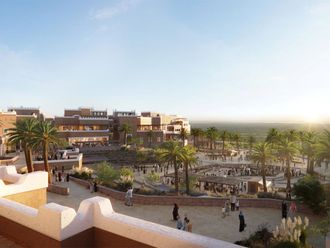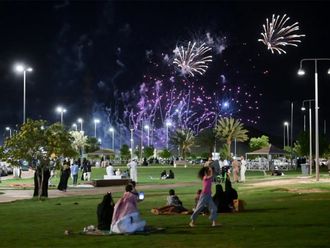Dubai: Hotels in Dubai attracted over 11 million guests in 2013, representing a 10.6 per cent increase (or more than one million guests) over 2012, Dubai’s Department of Tourism and Commerce Marketing (DTCM) said in a statement on Tuesday.
Hotel revenues stood at Dh21.84 billion for 2013, achieving a 16.1 per cent increase over 2012, according to DTCM.
The growth in visitor numbers marks Dubai’s progress in achieving its tourism vision for 2020, under which the emirate is expected to welcome 20 million visitors a year, according to Helal Saeed Almarri, Director-General of DTCM.
“In order to achieve our target, we must deliver on our strategy to position Dubai as a foremost destination for both leisure and business travellers by continuously evolving our destination offering and attracting visitors from a broader range of source markets while growing the number received from the markets which have traditionally been strong,” Almarri stated.
Total guest nights, meanwhile, grew by 11.0 per cent to 41.57 million, from 37.45 million in 2012. And 2013 occupancy rates rose slightly to 80 per compared to 78 per cent in the previous year.
Top source markets:
The emirate’s top 10 source markets for hotel guests in 2013 remained mostly unchanged compared to 2012, according to DTCM. They included Saudi Arabia, India, UK, USA, Russia, Kuwait, Germany, Oman, Iran and China.
The Australia market recorded the largest growth, with visitor numbers up 39 per cent to 269,000 in 2013 compared to 193,000 in 2012. The growth was helped by Emirates airline’s partnership with Australia’s Qantas, which resulted in more flights between Dubai and Australia.
Visitors from Saudi Arabia also grew to 1.35 million last year, representing a 19.9 per cent increase. India followed with 888,835 guests, up 16.3 per cent. In addition, China visitor numbers grew by 11 per cent to 275,675.
NEW HOTEL OPENINGS:
Last year a number of hotels opened in Dubai, including Conrad Dubai, the Oberoi and Sofitel The Palm.
The number of hotel rooms and apartments stood at 84,534 (for 611 establishments) in 2013, compared to 80,414 in 2012, DTCM estimates showed. This represents a growth of over five per cent.
Hotel supply is absorbing demand in the market, according to Christopher Hewett, senior consultant at TRI Hospitality Consulting. “The supply and demand ratio is balanced at the moment,” he told Gulf News, adding that it could change between 2015 and 2016, depending on the scale of the supply coming into the market.
The current development pipeline for the next two years comprises an additional 141 hotel establishments, including 99 hotels and 48 hotel apartments, according to DTCM. This brings the total supply to 751 hotel establishments and around 114,000 rooms.
“In order to provide accommodation for our targeted visitor numbers for 2020, we estimate we need a total of between 140,000 to 160,000 rooms and will work closely with the investment industry to make this happen,” Almarri stated.
Aside from developing more hotels, Dubai is working on diversifying its hotel offerings to attract a wider market of visitors.
Last year, Almarri announced that a 10 per cent municipality fee will be waived for newly developed three- and four-star hotels.
More recently, the government revealed directives to enhance and streamline hotel investment and development in Dubai. Some of these include the reduction of the pre-approval process period for hotel construction to two months and the allocation of government land for the development of three- and four-star hotels.












